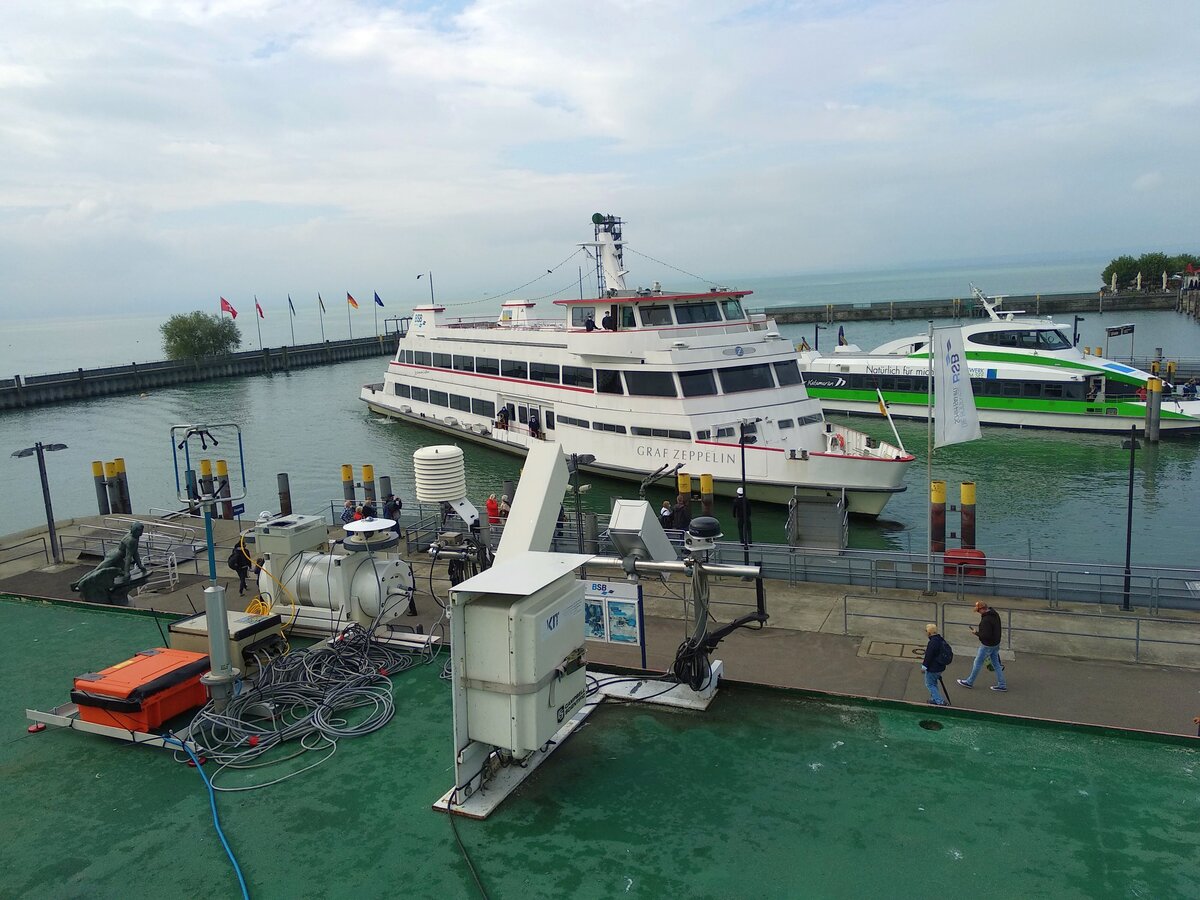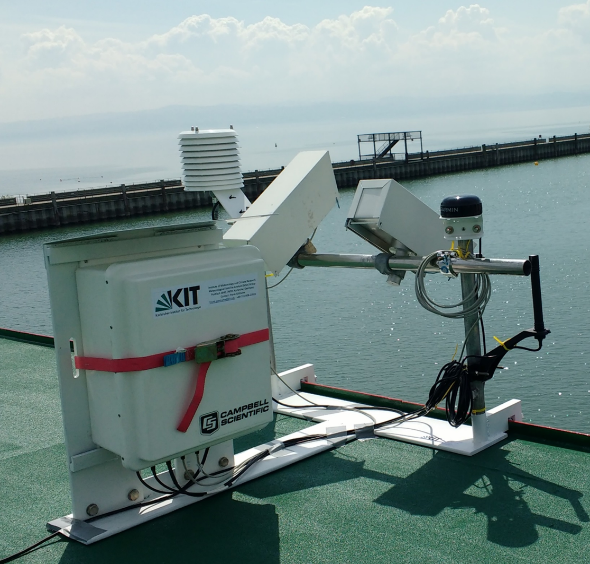Thermal Infra-red Product Inter-comparison and Validation with FRM Radiometers (Lake Constance project)
- Contact:
Maria Martin
- Funding:
EUMETSAT
- Partner:
Karlsruhe Institute of Technology (KIT) and the National Oceanography Centre (NOC), University of Southampton
- Start Date:
2020
- End Date:
2021
Overview
The EUMETSAT funded study validated satellite surface temperature products over Lake Constance and intercompared Fiducial Reference Measurements (FRM) from a Heitronics KT15.85 IIP radiometer and an Infrared Sea surface temperature Autonomous Radiometer (ISAR). The inter-comparison experiment was performed in September 2020 (COVID-19 pandemic) on the car ferry MS Friedrichshafen of the Bodensee-Schiffsbetriebe GmbH (BSB). The MS Friedrichshafen commutes all-year around between Friedrichshafen, Germany, and Romanshorn, Switzerland.
Key Objectives and Research Focus
The inter-comparison enhanced our understanding of satellite derived Lake Water Surface Temperature (LWST) observations and measurements performed with shipborne infrared radiometers (Heitronics KT15.85 IIP and ISAR). Satellite-retrieved surface temperature products, in particular from Sentinel-3, were validated and the accuracy of KIT’s permanently obtained in-situ LWST verified.
Main activities were:
- Acquisition of an LWST dataset from two FRM radiometers operating in parallel
- Inter-comparison of in-situ LWST data and FRM radiometer uncertainties
- In-situ validation of TIR satellite surface temperature products and associated uncertainties
Relevant Publications & Resources
| Category | Link |
|---|---|
| EUMETSAT - TIR Radiometer Intercomparison | Visit Page |
| ISAR - Infrared Sea Surface Temperature Radiometry | Visit Page |
| Journal Article - Remote Sensing of Environment (2025) | DOI: 10.1016/j.rse.2025.114609 |
| Journal Article - Earth Science Informatics (2024) | DOI: 10.1007/s12145-024-01530-0 |
| Journal Article - Remote Sensing of Environment (2022) | DOI: 10.1016/j.rse.2022.113296 |
| Journal Article - International Journal of Applied Earth Observation and Geoinformation (2020) | DOI: 10.1016/j.jag.2020.102136 |



